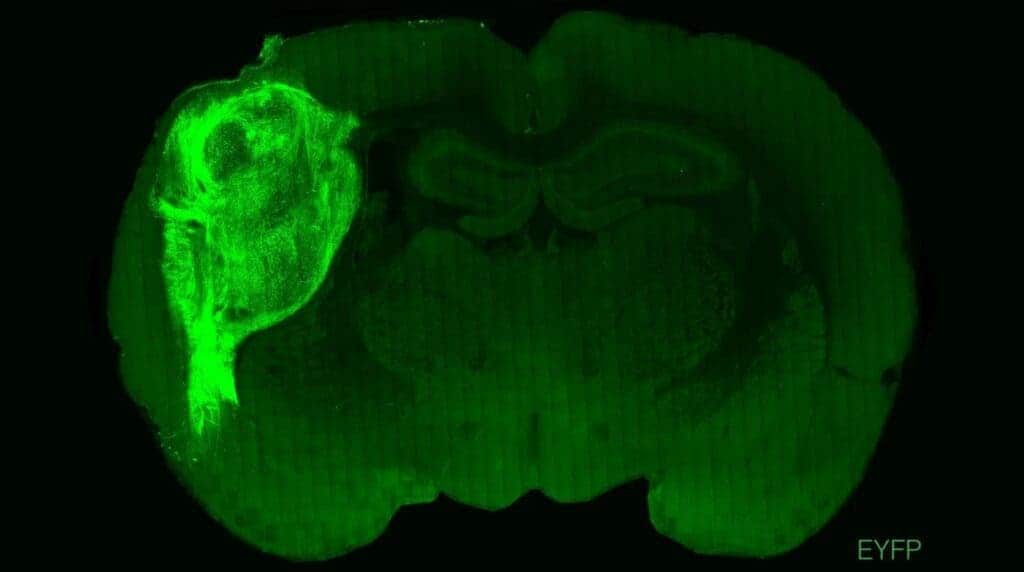Human neurons can survive — and even develop — after being transplanted into newborn rats. But are they still rats?

Understanding the brain is one of the greatest goals of modern science. But parts of what we find out are more curious than we could have ever imagined. A new paper highlights one such discovery.
Researchers at the University of Stanford report that human neurons transplanted into newborn rats can grow and develop with the animal.
These cells become fully functional, forming connections with the rats’ own brain cells and interacting with them — potentially participating in forming the animal’s behavior, the team explains. Such an approach could be used to learn more about the human brain and the disorders that can afflict it, the team explains.
Brainsplant
Sergiu Pașca at the University of Stanford, the corresponding author of the new paper, has been working for over a decade with neural organoids. These are small groups of neurons, usually created from human skin cells transformed into stem cells. These stem cells can be transformed into neurons in the lab, allowing researchers an ethical way to source functional human brain cells for study.
That being said, there’s a limit to what such organoids can teach us. They don’t fully and faithfully replicate everything going on in our brains. For example, they don’t form the same web of complex connections, don’t generate electric signals the same way, and don’t replicate the full array of structures we’d see in a regular brain. Finally, it’s not always easy to understand how structural changes seen in such an organoid in the lab might translate to real-world behaviors.
“Even when we kept human neurons for hundreds of days … we noticed that human neurons don’t grow to the size to which a human neuron in a human brain would grow,” says Pașca.
In order to find a solution to such issues, the team transplanted organoids into the brains of newborn rats. Due to their very young age, these animals undergo extensive brain development and rewiring as they grow. As such, the researchers assumed that neurons transplanted at such an early age would have the best possible chance of becoming integrated into the rats’ own neural circuits.
For the transplants, the team used organoids made from skin-cell-derived stem cells. The stem cells were first produced in the lab and then made to develop into layers of neural cells. These were, in turn, folded into structures resembling the human cortex (the outer part of our brains that handle sensory processes and higher-cognitive functions).
After the organoids were completed, they were placed into the brains of days-old rats through an incision in their skulls. Each organoid was transplanted into the sensory cortex.
Within four months of implantation, brain scans revealed that the organoids had grown roughly nine times more than their original volume, filling around a third of one brain hemisphere. Its cells appeared to have formed connections with the rat brain cells, becoming fully incorporated into their neural circuits, the team adds.
The cells themselves were much closer in size to neurons in human brains. Six months after the transplants were completed, these cells were around six times larger than those grown in the lab. Pașca calls them “absolutely immense”, explaining that these cells reach a level of maturation that hasn’t been seen in a petri dish in the lab. They also seem to ‘fire’ — to generate electric signals — the same way as those in a human brain.
Since the cells are fully integrated into the rats’ brain circuits, they likely play a part in controlling their behavior. In order to determine if this was the case, the team triggered the human neurons using optogenetics, a method for controlling a neuron’s activity using light and genetic engineering. The experiment revealed that the activity of these cells can influence the working of the brain through the release of proteins in several brain regions implicated in motivated behaviors. A similar release was not observed in control animals.
Put together, the findings showcase that human neurons can survive inside of and integrate into living animal brains. They also offer researchers a way to potentially study the behavioral effects of various treatments or procedures in the brain.
It also offers a unique approach to studying brain disorders. For example, the team created organoids from patients with Timothy syndrome, a rare genetic disorder that affects the brain and heart. These neurons had a different structure compared to healthy ones and seemed to function differently too. Pașca’s team is now hard at work using rats implanted with these organoids to test potential new treatments for the syndrome.
The novelty of this research does, however, raise a question I didn’t think I’d ever need to ask myself: are these rats still rats? The authors of the paper say ‘yes’, explaining that they found no signs of enhanced cognition, emotion, or any other human-like behavior or traits. But it is undeniable that these rats, at least on a cellular level, aren’t fully-rat, either.
As they are now, the team’s rats are only slightly modified from their baseline, and those modifications were focused on an area of the brain that deals with the processing of sensory information. However, it’s not impossible to think that, in the future, such implantations could create rats with much greater cognitive capacities than unaltered ones. Such animals will undoubtedly force us to grapple with the question of what exactly counts as a species change, and figure out where we stand on the idea of mixing human brain matter with living animals.
The paper “Maturation and circuit integration of transplanted human cortical organoids” has been published in the journal Nature.
This article originally appeared in October 2022.






